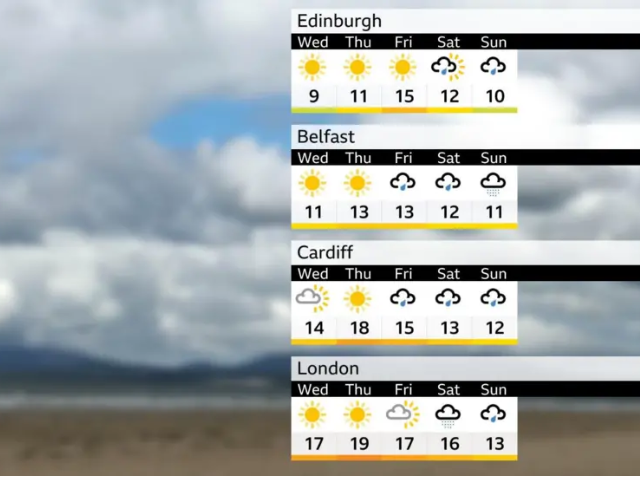Spring Equinox Thursday is expected to bring the hottest day of 2025 to the United Kingdom, temperatures reaching “well above average”, according to the Met Office.
The highest temperature on Wednesday was 18.7 ° C in Northolt, west of London.
However, the meteorologist of the Met Office Simon Partridge predicted Thursday will be even warmer, with a lot of sun and only a few good weather in the center of England.
Partridge said: “The highest temperatures are expected in an area that extends from London and counties of origin in the south of the midlands. We are likely to see 19 ° C or 20 ° C widely, with one or two areas that may reach 21 ° C.”
This increase in temperatures coincides with the astronomical early spring, marked by the spring equinox.
The temperatures expected on Thursday could even make the parts of the United Kingdom warm than certain European cities, including Barcelona, where temperatures should reach 15 ° C, and Athens, which should undergo summits of only 12 ° C.
The highest spring equinox temperature in the United Kingdom was 21.5 ° C in 1972, although the spokesperson for the Met Office Stephen Dixon said it was unlikely that 2025 exceed this brand.
This year, the United Kingdom has already experienced a top temperature of 19.7 ° C in Crosby, Merseyside, on March 9.
While Thursday will be hot and dry, with a lot of sun, the damp weather should arrive on Friday, bringing showers in certain parts of the United Kingdom.
They will start in Cornwall and move northeast throughout the day, affecting Wales, the center and southern England. The weekend should be more unstable, with rain for a large part of the country.
The meteorological spring started on March 1, while astronomical spring, or equinox, begins around March 20 of each year. The equinox marks the sun crossing the equator, making day and night almost equal. The next Equinox will take place in September.

BBC weather forecast
Is this hot weather unusual for Mars?
The warmer temperatures of this week should be 4 ° C at 7 ° C above the average of March, but these spells are not uncommon during the transition from winter to spring. Mars often brings significant temperature oscillations depending on the direction of the wind.
However, climate change has rendered these warmer spells more likely, climate scientists believing that this week’s temperatures are at least one to three times more likely due to climate change, and in some regions, four to five times more likely.
The hottest March temperature of 25.6 ° C was set in 1968 in MEPAL, Cambridgeshire.
How long will the hot spell last?
While Thursday will see the peak of heat, temperatures should stay above average for a few more days, both during the day and at night. However, the weekend, the fresh air and more unstable conditions will gradually move, marking the end of the hot fate.
For a longer term forecast, the monthly prospects of the Met Office will provide other updates.



